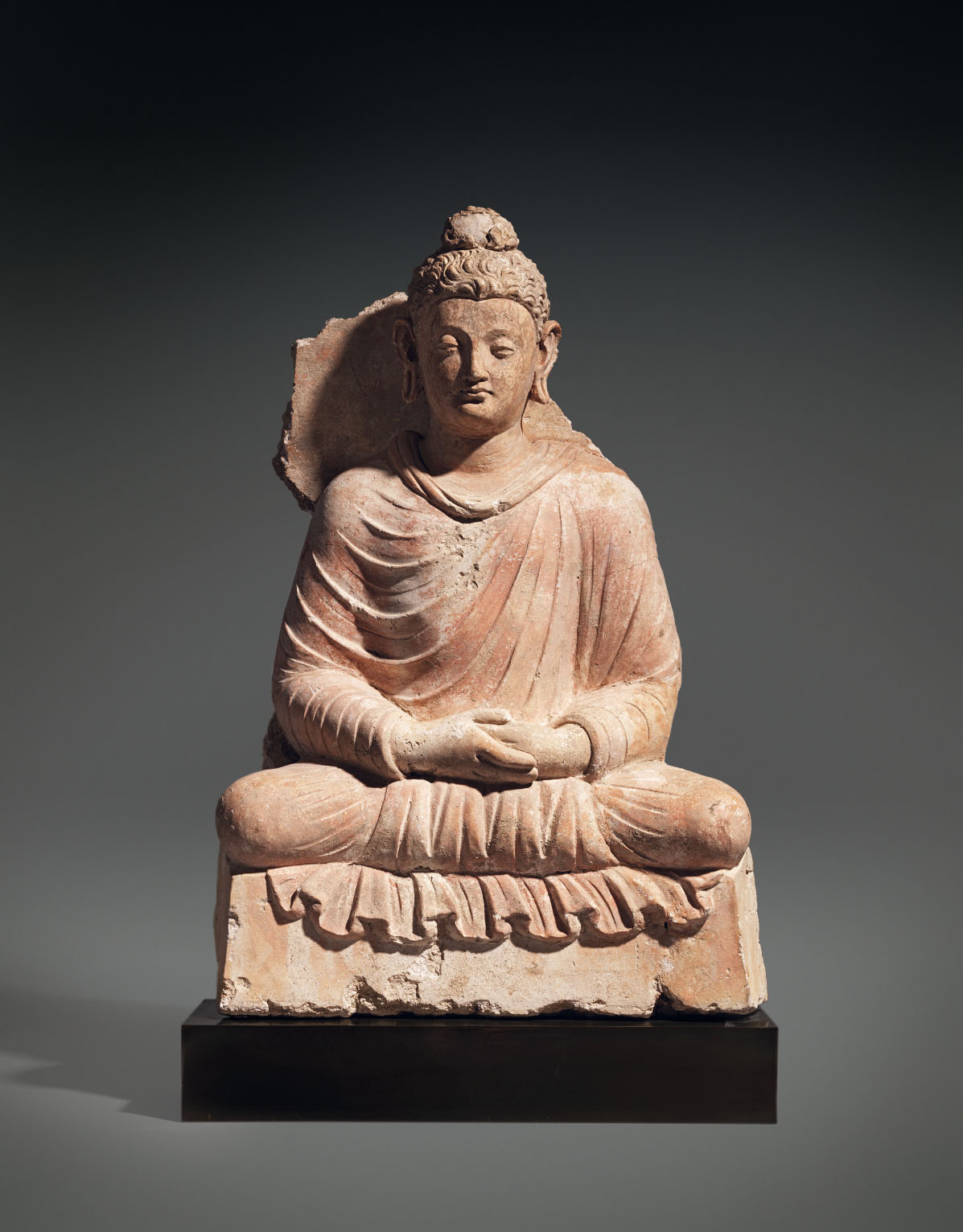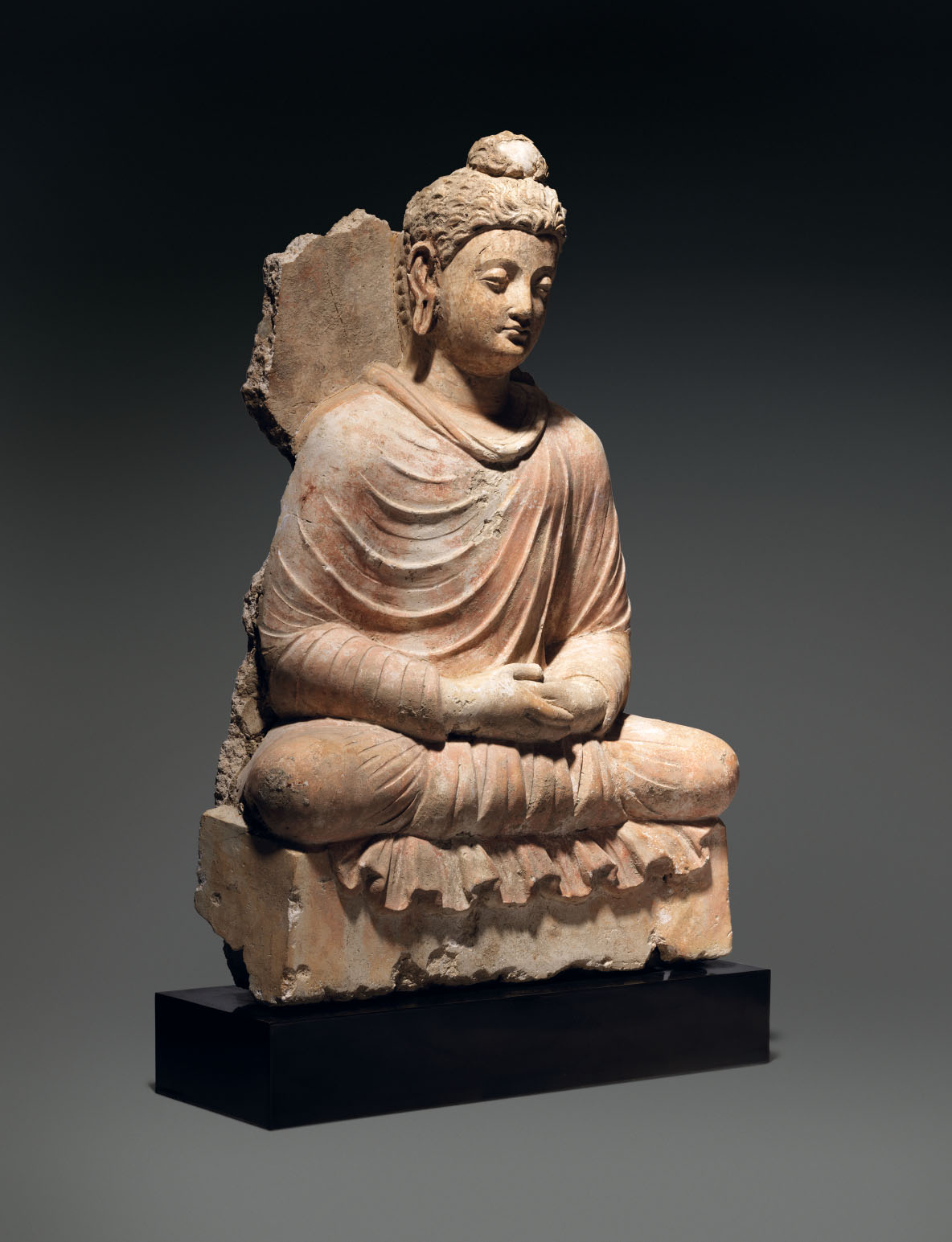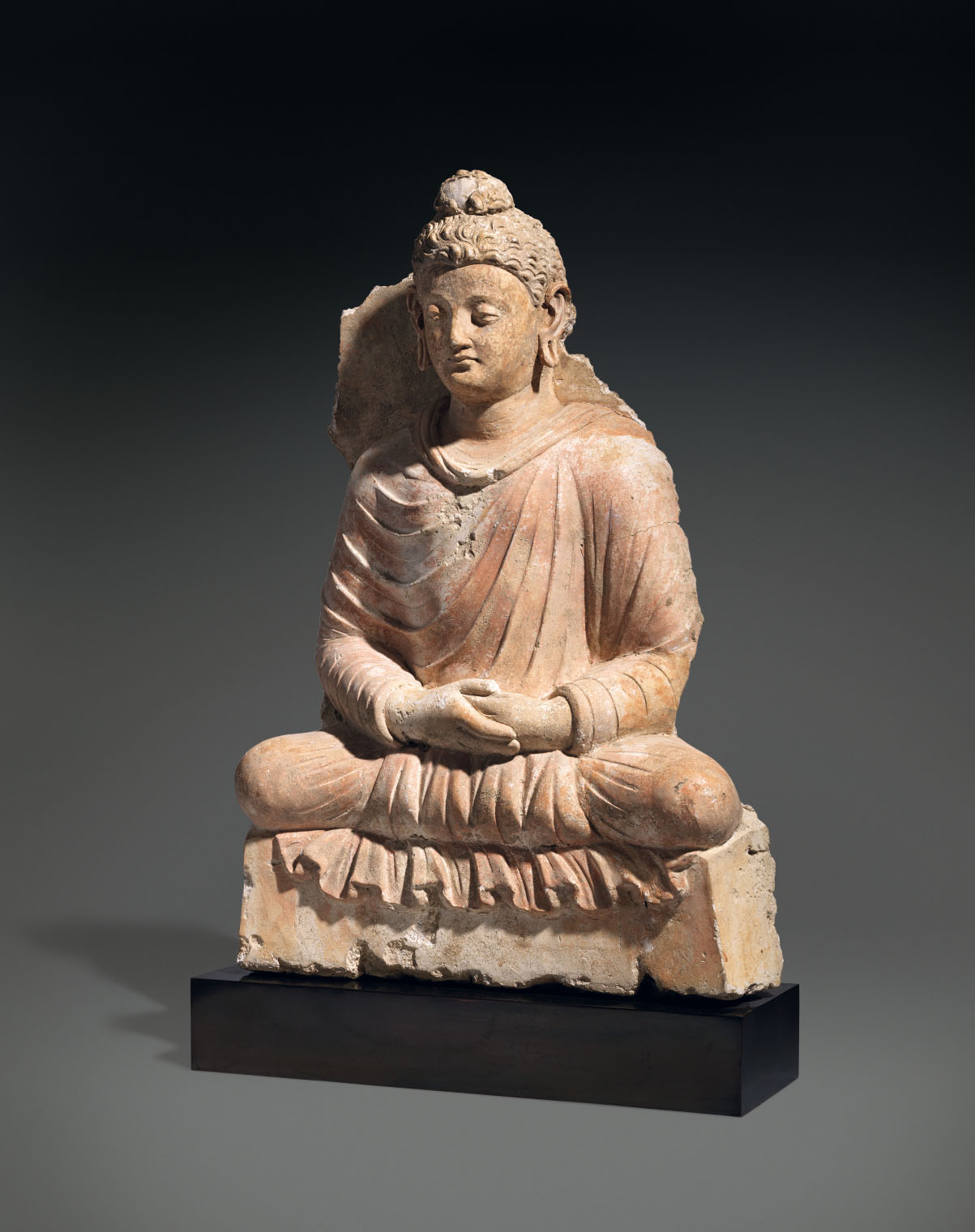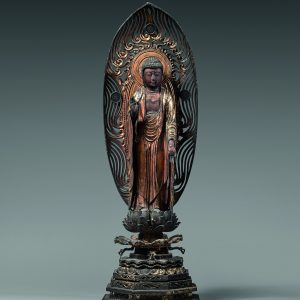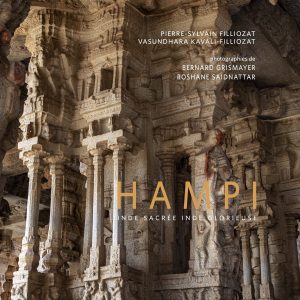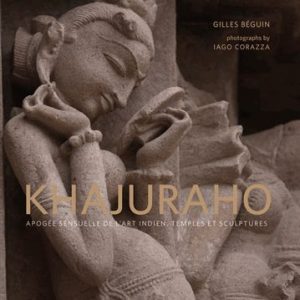Seated Buddha
Polychrome stucco
Ancient province of Gandhāra (northern Pakistan)
2nd – 3rd century
H. 55 cm
Description
In Gandhāra and throughout the vast regions it influenced, while the courtyards enclosing monasteries were soberly decorated, the external courtyards, those accessible to the faithful, bear witness to their untiring religious zeal. Abundant decoration covers the door frames of the chapels, the risers of the stairways and the foundations of the multiple relic tumuli (stūpa), erected as ex-votos. The walls are accentuated with niches with themes that are intentionally repetitive in order to create order and harmony throughout the monument. A wide range of materials were used, depending on local resources, and often concurrently: grey-blue schist, white limestone, stucco (as is the case here) and even adobe. A fine engobe covers it all, hiding any disparities and lending it a rich polychromy. Its ancient aspect must have been very different from its modern appearance. However, the original colors can be seen somewhat on certain parts. That’s the case for this beautiful meditating Buddha
Used in Gandhāra, as at the Taxila site, stucco was also used masterfully on the other side of the Khyber Pass in the Jalālābad region of southern Afghanistan. French and subsequent Afghan excavations at the Haḍḍa site have shed light on ancient terra cotta techniques. Statues were cast in molds and the resulting forms were then finished with a spatula. Often the finest stucco heads were fired separately and attached to the bodies with slurry. For this statue, slight cracking indicates such a process was used. This Buddha is depicted in meditation (dhānāsana), both hands resting in his lap, his body draped in a heavy monastic robe that once was saffron yellow. One of the folds passes underneath him, isolating him from the ground and falling forward. The fluted pleats are unrealistically rendered, lending a truly decorative feeling that would be accentuated by bright sunlight outdoors or the flickering of multiple tiny lamps in the depths of a chapel.
Note the hair style, with small wavy curls going in all directions, taken from the Hellenistic era, such as on the Belvedere Antinous or the wrestlers of the Uffizi (Haskell-Penny, 1988 p. 167, No. 74; p. 271, No. 126). The uṣṇīṣa on the top of the head, characteristic of a Buddha and covered with curls, looks like a simple bun.
This impressive statue offers a rare evocation of the monumental religious decors of early Buddhist art.
Provenance: Private collection, Europe, since 1999.
Exhibited: Human and Divine. 2000 Years of Indian Sculptures. Walsall, The New Gallery- Norwich, Sainsbury Centre of Visual Arts- Southampton, City Art Gallery, 2000-2001.
Publication: Khanna, Bairaj – Michell George, Human and Divine: 2000 years of Indian Sculpture. Londres: National Touring Exhibitions (Hayward Gallery), 1999, p. 26, cat. 22.

